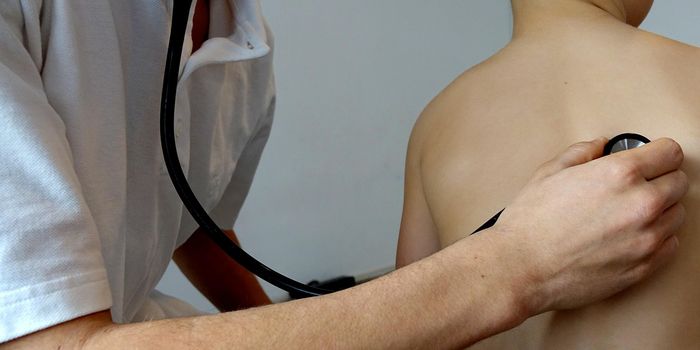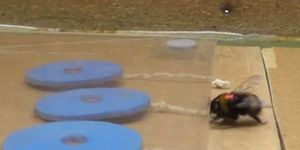Drosophila, the fruit fly, has been used as a model organism for decades by researchers investigate many different biological and genetic questions. Scientists would like to use them for the study of hearing; it’s thought that on the cellular level, human and fruit fly hearing is very similar. However, getting to the fruit fly ear is challenging.
A technology has been developed by researchers at the University of Iowa (UI) to address this issue, and they have called it a “goggatomy.” The goggatomy gives access to the ear of the fly, and organs of other types of insects, structures that are enclosed within a hard coating called an exoskeleton. It’s not only applicable to the study of hearing, either. Investigators researching anything from eyesight to the function of the brain and other physiological and biological mechanisms, can now open these structures to study the living cells inside of them. The procedure for opening arthropod skeletons is simple, and is described in the video above and
published in Frontiers in Physiology, an open-access journal.
An exoskelton is composed of bones and skin that work in combination to form a double-plated armor for the body of an organism that confers protection on the organs against disease, predators and other dangers. Those little organs can be tucked into places that are very difficult to reach. That’s presented a major hurdle for studying them in the live state.
The ear of a fruit fly is one such example. The antenna of the fly is only 80 microns wide, finer than a human hair, and it is there that the ear sits. The exoskeleton protects this part of the insect as well, adding to the challenge of getting inside to the contents.
"The essential problem is that the sensory cells are tucked inside the very small antennae, which prevents scientists from accessing the sensory cells," explained the paper's corresponding author Alan Kay, a Professor of Biology at UI.
Dentistry provided the inspiration for the solution. Kay’s father was a dentist, and as a kid, Kay was fascinated as by all the neat tools and materials used by his dad. He thought of trying to embed the fly's head in some kind of resin, to fix it in space while alive so he the cells and organs might be studied.
Christopher Barawacz and Steven Armstrong were collaborators at the UI School of Dentistry who provided resins for Kay to try. Jon Scholte and Allan Guymon, of the UI Department of Chemical and Biochemical Engineering, determined the chemical characteristics of the resins. The finished product was able to hold the head in place without bonding to it. Kay used light to harden the resin; fine cuts could then be made without damage to the cells inside. To nourish the cells during the procedure, the team added a nutrient solution.
"There's nothing like having the detailed internal 3-D topology that's just right there," commented a co-author of the report, Daniel Eberl, a UI biologist who studies fruit fly hearing.
The technique was demonstrated to work on mosquitoes, ants, water fleas and mites. Eberl and Kay plan to utilize their new technique to investigate questions about the fly ear such as why ear cells respond differently to outside stimuli.
"Some of the sensory nerve cells respond to vibration, while others respond to simple deflection, as would happen in a breeze," Eberl explained.
The underlying mechanisms of hearing are still a mystery, whether in humans or flies.
"The remarkable thing is a fly ear and a human ear look vastly different, but there's a lot of similarity in how these organs work," concluded Eberl.
Sources:
Science Daily via
University of Iowa,
Frontiers in Physiology









